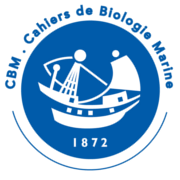Standards of initial training in Occupational Scientific Diving (OSD), a necessity for the mobility of scientists in Europe
Full-text download is only available to subscribers with a valid subscription.
- Authors:
-
FERAL Jean-Pierre,
NORRO Alain
- Keywords:
-
initial training standards;
european scientific diving panel (esdp);
underwater ecology;
coastal
- Abstract:
- Diving is an effective way to observe, collect or experiment in situ on echinoderms and other coastal bottom living organisms. Using it in an occupational setting is not just a matter of skill. Having it recognized as a scientific technique is a challenge due to the "recreational" image associated with its practice. Its supposed danger and the chain of responsibility that an accident could trigger also make its administrative acceptance difficult. These aspects can constitute obstacles, especially for international collaborations. EU standards validated by Member States can guarantee the mobility of "diving" scientists in Europe. From the 1980s, we understood that the implementation of initial training developed according to these standards and a controlled issuance of certificates guaranteed the safety of the activity and makes underwater interventions possible for the different scientific disciplines concerned. These standards have been defined in the context of the occupational practice of professional scientists. However, the use of the term "scientific diving" in recreational diving, which is not subject to the same training and practice constraints, concerns citizens who may act voluntarily toward sciences. This new semantic blurs the original concept of scientific diving. A clarification between occupational and citizen practice is currently necessary.
- Résumé :
- Normes sur la formation initiale en plongée scientifique professionnelle (OSD - Occupational Scientific Diving), une nécessité pour la mobilité des scientifiques en Europe. La plongée est un moyen efficace pour observer, collecter ou expérimenter in situ sur les échinodermes et autres benthontes côtiers. L'utiliser dans le cadre professionnel n'est pas qu'une question de capacité. La faire reconnaître comme technique scientifique est un défi en raison de l'image "récréative" associée à sa pratique. Son danger supposé et la chaîne de responsabilités qu'un accident pourrait déclencher rendent aussi son acceptation administrative difficile. Ces aspects peuvent constituer des obstacles, surtout lorsque les collaborations impliquent plusieurs pays. Des standards validés par les états membres peuvent garantir la mobilité des scientifiques professionnels "plongeurs" en Europe. Dès les années 1980, on a compris que la mise en œuvre d’une formation initiale élaborée selon ces standards et une délivrance contrôlée des certificats garantissaient la sécurité nécessaire rendant possibles les interventions sous-marines pour les différentes disciplines scientifiques concernées. Ces normes européennes ont été définies dans le contexte de la pratique professionnelle des scientifiques. Cependant, l'utilisation du terme « plongée scientifique » dans le monde de la plongée loisir, qui n’est pas assujettie aux mêmes contraintes de formation et de pratique et s'adresse aux bénévoles, brouille le concept originel de plongée scientifique. Une clarification sémantique entre pratique professionnelle et participative s’avère désormais nécessaire.

